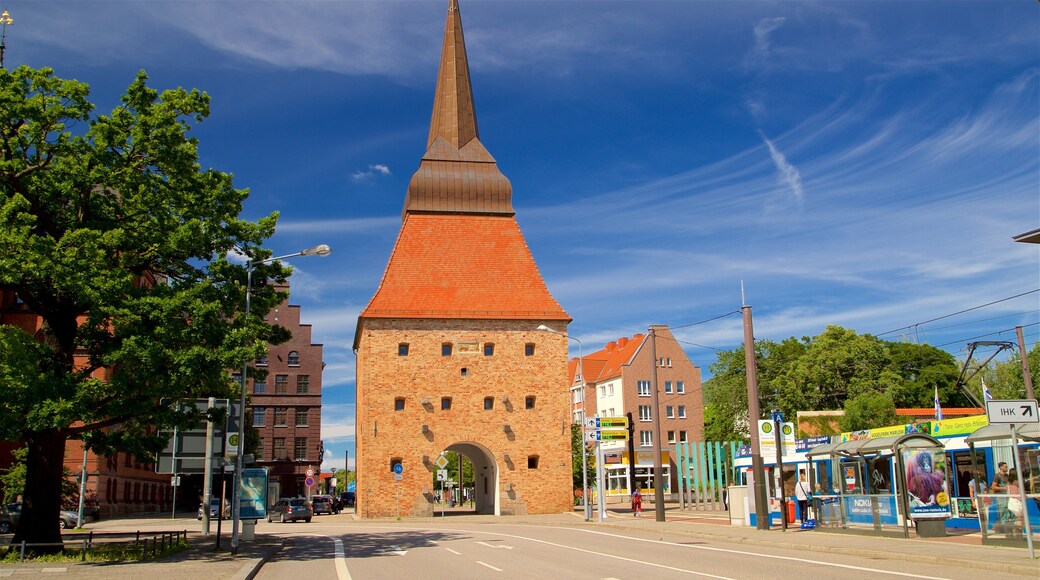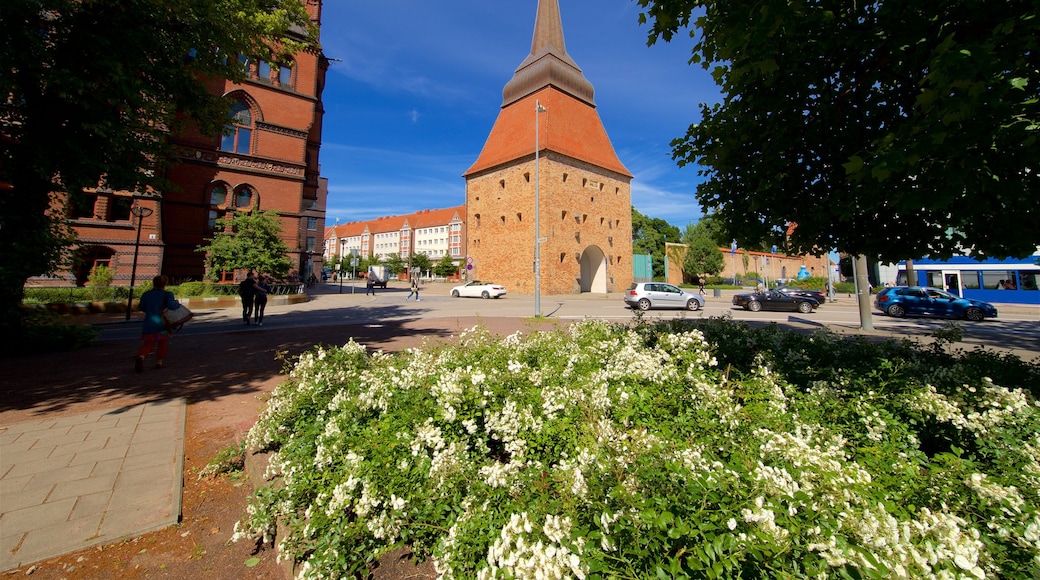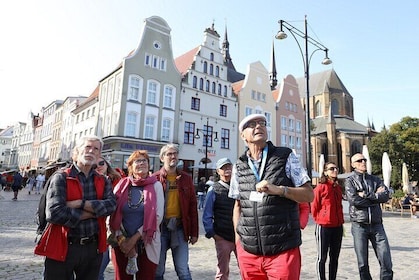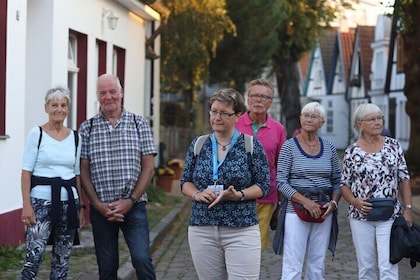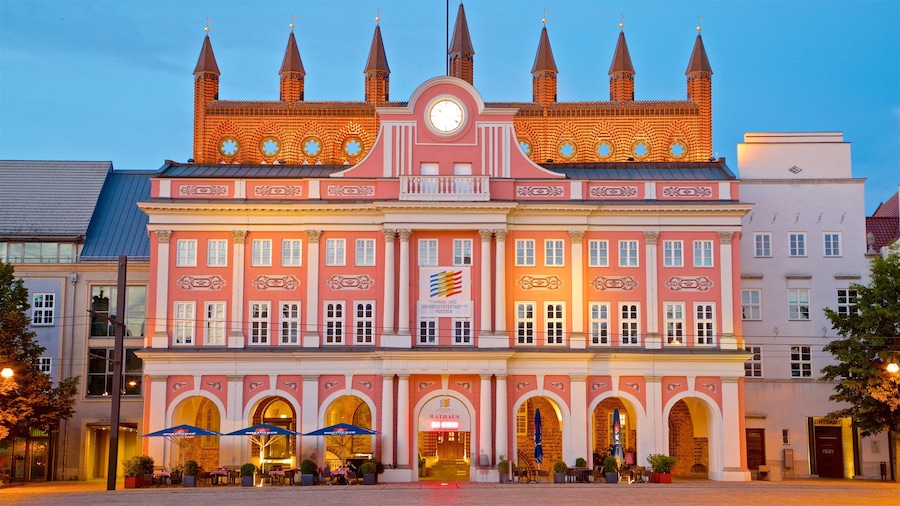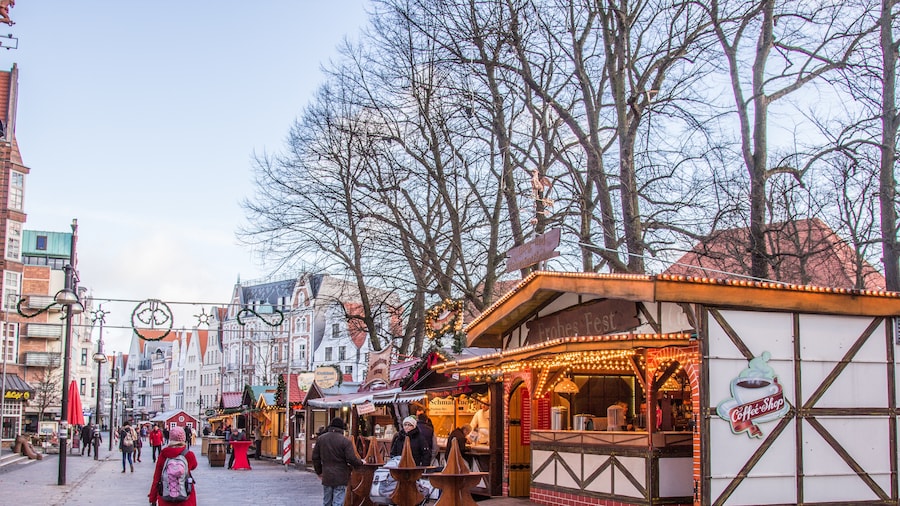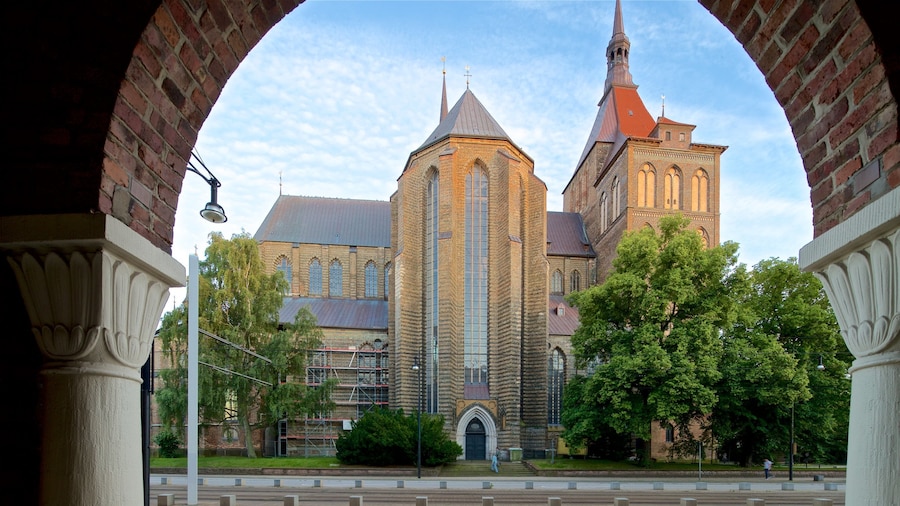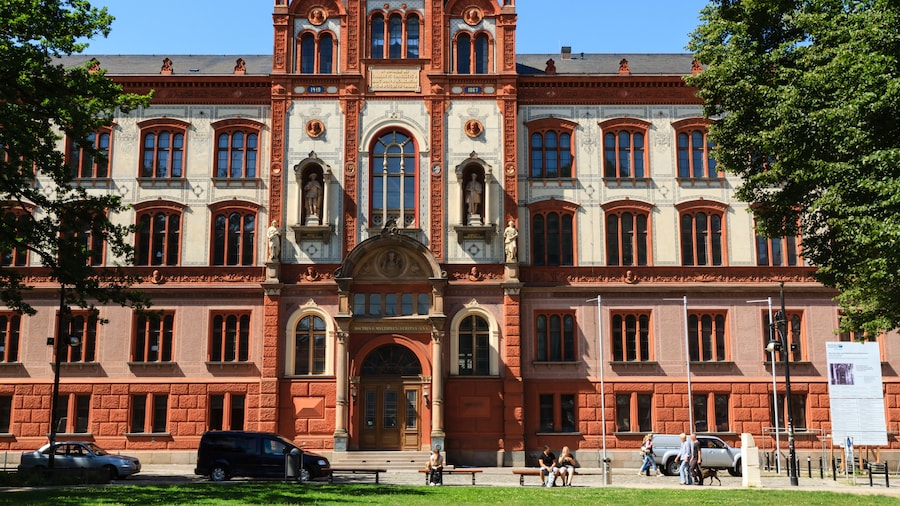Learn about the various insignias of the Hanseatic League and their meanings, as well as stories of Rostock’s past, at this former part of the city wall.
The Stone Gate was once the main entrance for royal visitors on their way to Marienkirche and the Town Hall. View this masterpiece of Dutch Renaissance defensive architecture, covered in emblems of the Hanseatic League. Talk with local residents to hear conspiracy theories swirling around the gate’s construction and symbolism. It was built in 1575 to replace a Gothic gate that was destroyed because the city refused to sign an oath of homage.
Approach the gate from the city, letting it come into view around buildings. Pass the griffins on either side. Identify the three coats of arms used by the city over the years, which sit below the third-story windows: the griffin, which was the secret seal, the bull’s head, and the red-white-and-blue shield that served as the Hanseatic coat of arms. Practice your Latin on the inscription, which translates to, “Within your walls find harmony and public well-being.”
Try to unravel the mystery of the carved and painted soldier above the seals, who may hold a shield or a round loaf of bread. The date next to him has mysteriously changed from 1576 to 1314 and back again over the last 400 years. Rumors say he represents a traitorous city mayor who betrayed Rostock to its enemies and was imprisoned in 1314 on the site of the gate.
The outer façade is said to be plain in order to annoy a duke. Hooks still present in the stone once held up the portcullis. Return in the evening, when lights shine on green stiles on either side of the gate, representing the walls that historically made Stone Gate an essential part of Rostock’s defenses.
The Stone Gate is south of Old Town, a 5-minute drive from Rostock’s central train station. Walk from the train station in 15 minutes or from the New Market in 3 minutes. Find parking nearby on the street, though Rostock’s Old Town is best explored on foot. Take the tram, which has a stop immediately beside the gate and provides connections to Old Town as well as the rest of the city.
